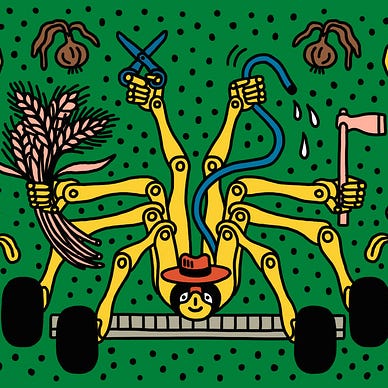Forecasting of Crop Yield using Remote Sensing Data, Agrarian Factors and Machine Learning Approaches — By Jasmin Bharadiya
Hello…Hello…! I am a ML researcher & I always get surprised how much of AI & ML can be used in wide areas not just in tech world. I did a journal article on Forecasting Crop Yield & was impressed by how ML can help in Agriculture as well.



Abstract
The art of predicting crop production is done before the crop is harvested. Crop output forecasts will help people make timely judgments concerning food policy, prices in markets, import and export laws, and acceptable warehousing.
It is possible to reduce the socioeconomic effects of crop loss brought on by a natural disaster, such as a flood or a drought, and to organize humanitarian food assistance. It has been suggested that deep learning, which lets the model to automatically extricate features and learn from the datasets, could be useful for predicting agricultural yields.
This review helps to understand that how vegetation indices and environmental variables affect agricultural output by revealing gaps in our understanding of deep learning methodologies and remote sensing data in a specific area. Literature review of 2011–2022 has been collected from different databases and sites and analyzed to meet the aims of this review.
The study mainly focused on the benefits of machine learning, agrarian factors and remote sensing for forecasting crop yield. The most often employed form of remote sensing is satellite technology, namely the usage of the Moderate-Resolution Imaging Spectro radiometer. Vegetation indices referred to as the most often employed attribute for forecasting crop yield, according to the results. This review compares all these techniques and pros and cons related to them.
Artificial Intelligence role in crop yielding
Examples of some AL/ML techniques used in crop yield prediction
How ML helps Agrarian factors & Remote sensing in Crop yield forecasting?
While remotely sensed photos typically offer more spatio temporal spectral information that may be exploited, more subtle and diverse patterns, and more complex patterns, there are stricter limitations on how these image scan be processed than for natural photographs.
The incorporation of DL into environmental remote sensing has allowed for its use in a wide variety of applications, such as land cover mapping, environmental parameter retrieval, data fusion and downscaling, information production and prediction, and so on, all thanks to DL’s superior ability in feature representation.
Conclusion
Based on the findings of this review, it is determined that the vegetation indices and meteorological data, which define the characteristics of the crops and help in monitoring the climatic conditions that directly influence crop yield forecast, are the most often utilized aspects. Furthermore, it is evident that the factors that affect crop yield forecasting are influenced by the crop yield and how it relates to other variables. Still further research is needed to examine the pro and cons of various techniques.
The full research paper can be found here!
Follow for more things on AI! The Journey — AI By Jasmin Bharadiya
